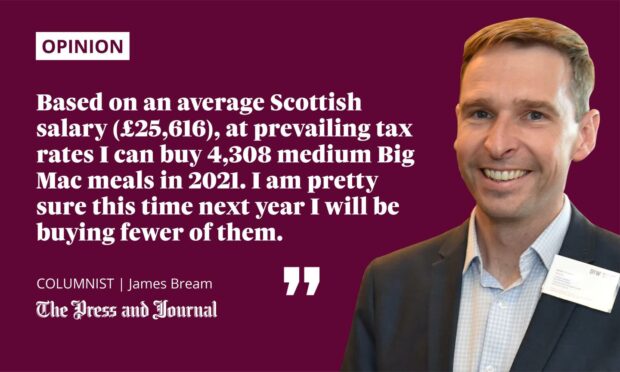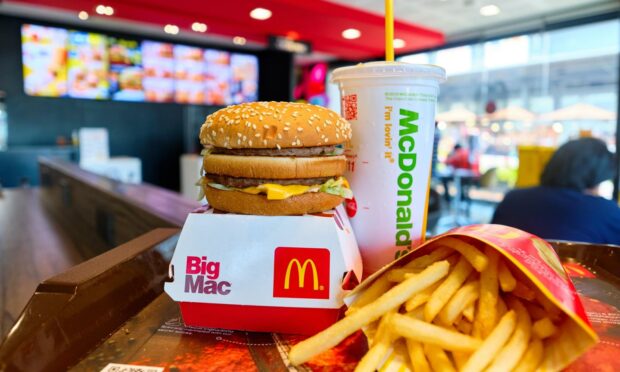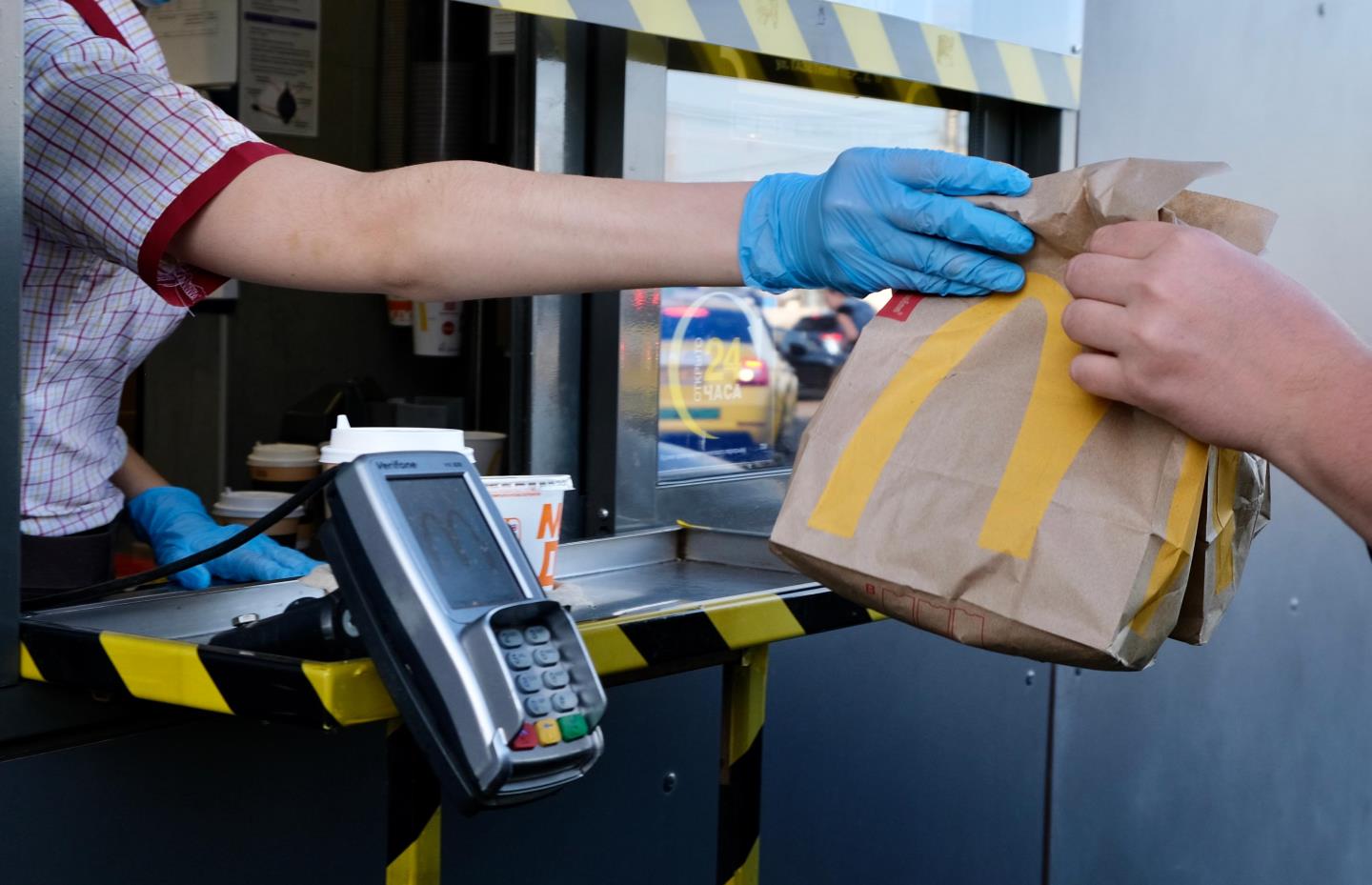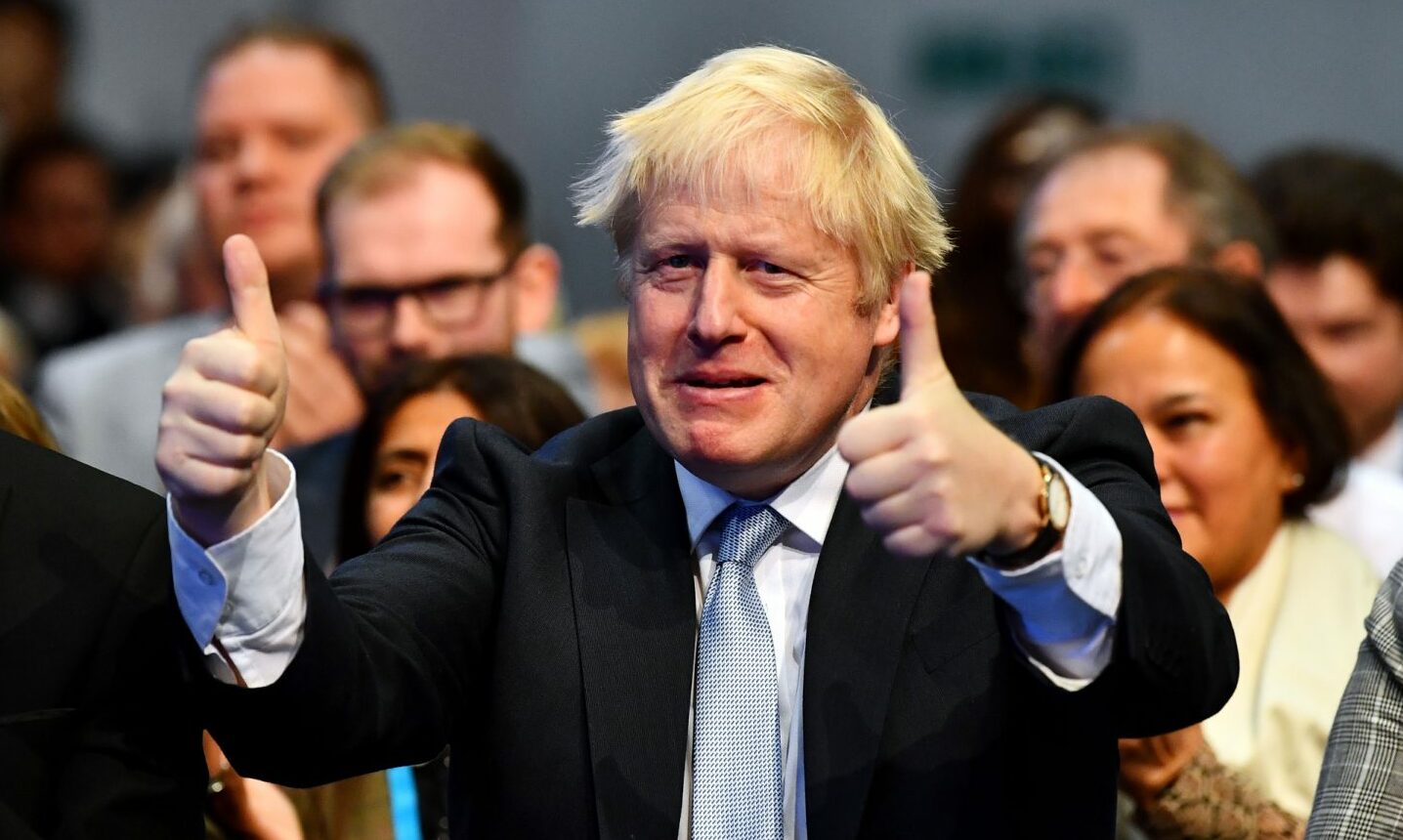August 10 2030 and I’m excited. It’s 32C, blazing sun, and I’m on my way to the Cormack Arena.
It is the first game at the Dons’ new net zero stadium which has been part funded by locals who made good from oil and gas. New signing, Marcus Rashford, is due to start at the centre of defence, too. (Remember we nearly signed Klinsmann?)
On the way, I fill my 2023 diesel Korean SUV up, the last of a dying breed of non-hydrogen cars. I kept it because of the seven-year warranty, but can’t actually get it serviced anymore. Electric cars disappeared after columnist Dick Winchester changed the direction of travel, following a Twitter battle with Elon Musk.

While I am excited, today has been expensive. The fuel cost £450, ticket £150, and my Big Mac meal was £20!
A few things happened between 2021 and August 2030, but the biggest change was the impact of five years of record inflation between 2023 and 2028. However, it seems we are back on track now, finally.
On October 6 2021 the UK prime minister said we would have high wages and a highly skilled economy. He was right; we got to 2030 and wages are, on average, £200,000 per person in the UK.
By 2028, the government had also reduced the relative scale of debt created during the Covid-19 pandemic in record time. However, the summer of 2028 was not a happy one for many in the UK. Studies showed that inequalities were greater than ever and purchasing power – what you can buy with your salary – had fallen.
Digesting the Big Mac index
Now, the story above is rather far-fetched but we should be careful when we hear promises about higher wages; it isn’t necessarily always a good thing. I’ll be happy when I hear a prime minister tell me that next year, or in ten years’ time, I will be able to afford more Big Macs.
Those poorest in society will be relatively worst hit by changes to Universal Credit, rising energy costs and general inflation, regardless of good policies in other areas
If you study economics, you learn about the Big Mac index. Basically, the index allows you to test your purchasing power in different countries. The Big Mac is ubiquitous but, relative to local income, it can be more or less expensive. It helps us translate things like exchange rates in a simple way.
In much the same way, we can understand how well off we are by using the Big Mac as a measure. Based on an average Scottish salary (£25,616), at prevailing tax rates I can buy 4,308 medium Big Mac meals in 2021. I am pretty sure this time next year I will be buying fewer of them. Come back in 2022 to find out.
Last week, Boris Johnson promised wages would go up, skills would grow and our economy would flourish. The gist of this is good and has some potential and decent grounding. There is some sense of boldness.
The government has a problem, and one which UK and Scottish Governments have failed on for decades now – this is not a UK versus Scotland issue. However, promises of higher wages with no real grounding in industrial delivery or checks and balances on the poorest in society could cause real complications.
Inflation could be at least 5% next year
Pledges to invest in young people, education, training and so on are all laudable and important. However, those poorest in society will be relatively worst hit by changes to Universal Credit, rising energy costs and general inflation, regardless of good policies in other areas. Rising energy prices and supply chain issues will feed into wider inflation – including the Big Mac.
This is a bit of educated guess work but next April or May, if energy caps rise, and if we see continued labour and supply chain issues in the UK and globally, I think inflation could be at least 5% – maybe even double digits. It will be hard for the Bank of England to treat this as a temporary issue.
If Boris was being really bold, he could have given a rise in wages by increasing the national minimum wage. This would have instantly boosted incomes and would be a signal to companies to invest capital into technology and new ways of working. It would place a premium on service jobs, too, which is no bad thing, in my opinion.
This suggestion is not without risk in terms of the jobs market, but there are already high levels of vacancies so mass redundancies might not be a definite outcome.
My fear as we stand is that the vast majority of us will all be able to buy fewer Big Macs this time next year and the poorest may be worst hit.
For now, I am glad I fixed my energy prices in mid-September but remain concerned that I didn’t have the option to hedge burger prices.
James Bream was research and policy director at Aberdeen and Grampian Chamber of Commerce and is now general manager of Aberdeen-based Katoni Engineering












